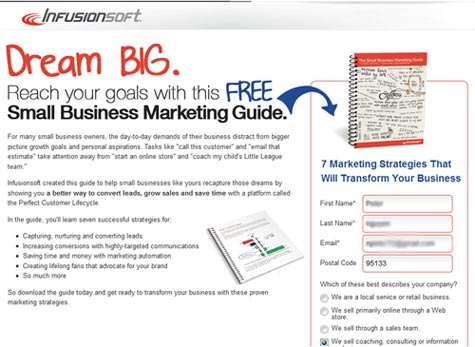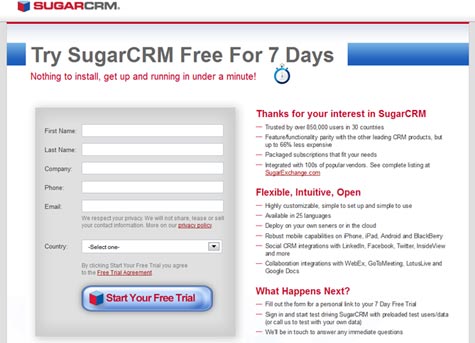 The buying cycle in the B2B space can be complex and long. Depending on the industry and business, the buying cycle could be a few months to a year or more. Furthermore, there could be multiple parties involved in the buying decision.
The buying cycle in the B2B space can be complex and long. Depending on the industry and business, the buying cycle could be a few months to a year or more. Furthermore, there could be multiple parties involved in the buying decision.
As such, don’t expect visitors arriving on your website to be in the “buy ready” mode right away.
The importance of doing Lead Nurturing
Since you already know that B2B buyers’ buying cycles could be long and complex, it’s critical for you to design and implement a lead nurturing program. By having a well thought out and well executed lead nurturing program, you will have a much higher success of converting skeptical prospects into marketing qualified leads.
Once the leads have been qualified by you, you could pass them to your sales team to close the deal. It is a lot easier for Sales to close the deal after the prospects have been qualified through a lead nurturing program.
Understand the different stages of the buying cycle
A typical B2B buying cycle has the following stages:
- Prospects become aware of the current problems or pain points as they occur in the day to day operations.
- Prospects begin researching for possible solutions. They could begin their research process by using search engines such as Google or by visiting vertical directories or websites/blogs/social media sites dedicated to their industries. This process could take a long time as the prospects want to gather as much information as possible. During this time, they will also discuss internally among the different decision makers and influencers.
- Prospects gather a list of possible vendors to talk to.
- Prospects request for quotes and proposals.
- Negotiate
- Choose a vendor
- Implementation
Before putting your prospect through a lead nurturing campaign, it is important for you to find out at which stage in the buying cycle each of your prospect falls in.
If you can gather enough intelligence information to know which stage of the buying cycle each of your prospect is in, you can send them through an appropriate lead nurturing campaign.
It is essential that you take into consideration the marketing channel you use to establish that initial contact. Did you meet them at a tradeshow? Did they come to your website from the search engine, or banner ad, or from a social media networking site? Or did someone refer them to you? Which keywords did they use to find your website?
By doing a thorough analysis, you can have a better understanding of the intent, motivation, and purchasing timeline of each of your prospect.
Capturing Visitors’ Contact Information
The lead nurturing process can only begin once the visitors indicate some level of interest to engage with you and have given you their contact information. By giving you their contact info, they have given you permission to engage with them.
But in order for the visitors to give up their contact info, you must provide them with a compelling reason to do so. There must be an exchange of value. A great way to do this is to offer the visitors that come to your website a free report, free E-book, or free white paper.
Your free offers must provide high value content that is designed to educate and provide insights that help your prospects somehow. Don’t just give something that is full of fluffs. Your reputation and credibility is on the line. If you can impress your prospects by demonstrating your thought leadership and expertise, they will trust you more and will be more willing to engage with you.
Additionally, your content should be relevant to your prospect and should sync with the stage of the buying cycle the prospect is in. A prospect that is very early in the buying cycle definitely has a different content interest than a prospect that is further along in the buying cycle.
I want to reiterate the importance of being able to capture your prospects’ contact information. If you’re going to spend all these money on promotions, tradeshows, and advertising, you don’t want those investments to go to waste. So, make all the efforts necessary to capture their contact info!
Below are a few examples of good landing pages that contain the form to capture the visitors’ contact info.


Landing Pages Best Practices
To compel the visitors to fill out the contact form, your landing page should contain the following elements:
- A clear and compelling headline.
- Some bullet points that convey the benefits and value propositions.
- A compelling offer (Free E-Book or Free Trial).
- A contact form.
- A prominent Call to Action Button (“Start Free Trial” or “Get Instant Download”).
Additionally, your layout should be clean and professional looking.
How to Nurture Your Prospects
The nurturing process can be short or long. Just keep in mind that different buyers have different requirements, different budget constraints, and different timelines to implement a new solution.
It’s important to respect your prospects timeline. Your job in lead nurturing is to maintain the dialogue and continue to establish your expertise and thought leadership until the prospects are ready to buy. And they will need to replace their existing solution at some point down the road. If you do a good job of engaging them and nurturing them along the way, they will more likely to consider your solution when they’re ready to buy.
Here are the different methods you can use to continue the dialogue and engage with your prospects:
- Send them any content (blog articles, videos, white papers, reports) that you think could educate them, inform them, and help them become more knowledgeable.
- Send them case studies that are relevant to their businesses and industries. Case studies help to establish trust and credibility.
- Invite them to a webinar in which you can do a demo of your product or share best practices. In addition, you can host a Q&A to give them an opportunity to learn more about your products or services without any sales pressures.
- Give them a call to ask them if they need any additional information to help them make a decision.
The above activities could get quite complicated and tedious if you were to use a manual method. Nowadays, there are lots of powerful marketing automation and CRM solutions available that could automate a lot of the activities mentioned above. Popular marketing automation solutions for small businesses include Pardot, Hubspot, and Marketo Sparks.
Track and Measure the Activities and Behaviors of the Prospects
In order to make your lead generation process as efficient as possible, you should definitely track and measure the activities and behaviors of the prospects. How they behave when they are on your website, which pages they visit, and whether or not the click on certain links, attend certain webinars can give you a lot of clues on their level of interests and intent.
By implementing a lead scoring system based on demographics data and behaviors, you could qualify the leads appropriately and only send the high quality leads to Sales. I’m sure Sales would appreciate you a lot more!
Continuously Refine and Fine Tune Your lead Nurturing Process
Your first cycle of doing lead nurturing may not yield the results that you want. The important thing to remember is that lead nurturing takes time and necessary refinements and adjustments to make it effective and powerful.
Along the way, you should get inputs and feedback from sales as well as members of the technical team and executive team. It should be a companywide team efforts.
